wild west
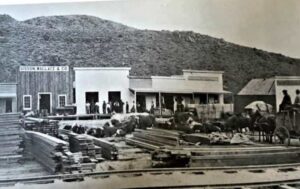
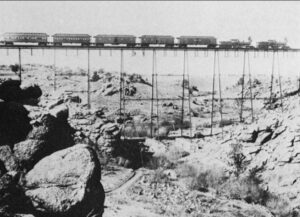 When the Transcontinental Railroad opened in 1869, the people in the east finally had the chance to take a trip into the Wild West without having to move there or plan on spending months there visiting family. I can imagine that there were mixed emotions involved as they headed out. The Western dime novels had told of wild Indians, gunslingers, bank robberies, and of course, train robberies. It was almost enough to make them question the sanity of their intended trip into the wild, but nevertheless, they went.
When the Transcontinental Railroad opened in 1869, the people in the east finally had the chance to take a trip into the Wild West without having to move there or plan on spending months there visiting family. I can imagine that there were mixed emotions involved as they headed out. The Western dime novels had told of wild Indians, gunslingers, bank robberies, and of course, train robberies. It was almost enough to make them question the sanity of their intended trip into the wild, but nevertheless, they went.
One of the great misconceptions of the Wild West is that it maybe wasn’t quite as wild as the Easterners had been told. In fact, the town of Palisade, Nevada, a state notoriously known for its wildness these days, like many other Wild West towns of the time, was actually very peaceful. In fact, the town had so few crimes that it didn’t even have an official sheriff. So, when the train began running through Palisade, and the train conductor 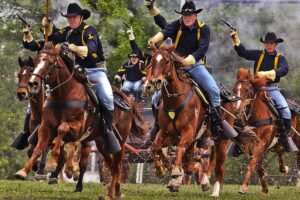 told the townspeople that railroad passengers were often disappointed at how these quiet towns were so different from how they were portrayed in the Western dime novels, he people of Palisade decided that something had to be done.
told the townspeople that railroad passengers were often disappointed at how these quiet towns were so different from how they were portrayed in the Western dime novels, he people of Palisade decided that something had to be done.
The townspeople, with the full knowledge and approval of the citizens of the town, the US Cavalry, and even a local Indian tribe, staged Western-style shootouts in the street, bank robberies, Indian battles, and whatever else they could think of. The whole purpose was to provide entertainment for the passing railroad travelers. After the train passed, life in the small town went back to its “dull, quiet, and peaceful” normal. I don’t know if the purpose was to bring in more tourists, to save face when it came to the Western dime novels, or maybe just to have a good laugh at the expense of the city-slickers. The reality is that many of the people back east, at that time, felt like their way of life was better than the “craziness” of the Wild West, and that to go have a look was a way of not only entertaining themselves, but also to prove that the West could not possibly be a peaceful place to live. Of course, while things could be violent and wild in the old West, it wasn’t always that 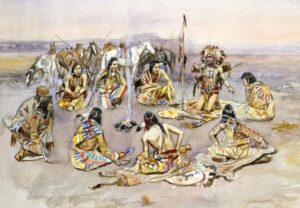
 way. It’s also a possibility that the people had moved to the West wanted the people in the East to think that the West was a wild place, full of adventure. It was the whole purpose for going west anyway, wasn’t it…to find that adventure? Yes, that was the purpose for the move to the West. And that purpose had to be protected, by any means necessary…even theater.
way. It’s also a possibility that the people had moved to the West wanted the people in the East to think that the West was a wild place, full of adventure. It was the whole purpose for going west anyway, wasn’t it…to find that adventure? Yes, that was the purpose for the move to the West. And that purpose had to be protected, by any means necessary…even theater.
 Many people who love the era of the Cowboys and Indians, also find themselves intrigued by the Mountain Men. These men were the epitome of the “wild” west. The Mountain Men were often what many might call “social rejects,” because they lived in the wilderness, hunted and fished to sustain themselves, and were often trappers who sold their furs to supplement their living. All that seems rather normal, but they were also reclusive, and often had long hair and a bushy beard. I suppose that many people would think that our opinion of the mountain men was discriminatory, but we have always had some concerns over those who were so very different. Maybe we even associated the mountain men with lawlessness. They often lived in the wilderness, because the were non-conformists when it came to the law. It wasn’t that they wanted to rob banks and kill people, but rather that they wanted to be free to live their lives the way they saw fit, without all the rules and regulations of society.
Many people who love the era of the Cowboys and Indians, also find themselves intrigued by the Mountain Men. These men were the epitome of the “wild” west. The Mountain Men were often what many might call “social rejects,” because they lived in the wilderness, hunted and fished to sustain themselves, and were often trappers who sold their furs to supplement their living. All that seems rather normal, but they were also reclusive, and often had long hair and a bushy beard. I suppose that many people would think that our opinion of the mountain men was discriminatory, but we have always had some concerns over those who were so very different. Maybe we even associated the mountain men with lawlessness. They often lived in the wilderness, because the were non-conformists when it came to the law. It wasn’t that they wanted to rob banks and kill people, but rather that they wanted to be free to live their lives the way they saw fit, without all the rules and regulations of society.
One such mountain man, was Joe Meek, who was born in Virginia in 1810. Meek was a friendly and relentlessly good-humored young man. Unfortunately, Meek did not have a the same interest in school, that he did to be a friendly, funny guy. In reality, his biggest problem was that he had too much energy to sit still and learn. After finally giving up on schooling, at 16 years old, Meek moved west to join two of his brothers in Missouri. Meek later found a need to read and write, and so taught himself, but his spelling and grammar were said to be “highly original” throughout his life.
In early 1829, Meek joined William Sublette’s ambitious expedition to begin fur trading in the Far West. This was the perfect lifestyle for Meek, and he found himself flourishing. Meek traveled throughout the West for the next decade, thoroughly enjoying the adventure and independence of the mountain man life. Meek was an average man, standing 6 feet 2 inches tall. He wore a heavy beard, and became a favorite character at the annual mountain-men rendezvous, where he regaled his companions with humorous and often exaggerated stories of his wilderness adventures. Meek, who was a well known grizzly hunter, claimed he liked to “count coup” on the dangerous animals before killing them, a variation on a Native American practice in which they shamed a live human enemy by tapping them with a long stick. Meek also claimed to have wrestled an attacking grizzly with his bare hands, before finally sinking a tomahawk into its brain. I suppose it might have been a tall tale, but more than one mountain man hs fought a bear. Some have won, and some have not had the same outcome…sadly.
Meek may have been a misfit in society, but he had good relations with many Native Americans, and in fact, he married three Indian women during his lifetime, including the daughter of a Nez Perce chief. Still, that good relationship didn’t prevent him from getting into some squabbles with the tribes. Many of the Indians didn’t like the incursion of the mountain men into their territories, and periodically, things got hostile. In the spring of 1837, Meek was nearly killed by a Blackfeet warrior who was taking aim with his bow while Meek tried to reload his Hawken rifle. Luckily for Meek, the warrior dropped his first arrow while drawing the bow, and the mountain man had time to reload and shoot.
Finally, in 1840, Meek saw that the golden era of the free trappers was ending. He decided that it was time for a “career change.” Meek and another mountain man, along with Meek’s third wife guided one of the first wagon trains to cross the Rockies on the Oregon Trail. Once there, Meek settled in the lush Willamette Valley of western Oregon, became a farmer, and actively encouraged other Americans to join him. He could see that 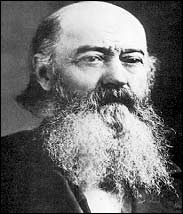 times were changing. In 1847, Meek led a delegation to Washington DC, asking for military protection from Indian attacks and territorial status for Oregon. After the long journey, Meek arrived in Washington DC “ragged, dirty, and lousy.” Nevertheless, he became something of a celebrity in the capitol…maybe a little bit like “Crocodile Dundee.” Meek was a novelty, and the Easterners relished the boisterous good humor Meek showed in proclaiming himself the “envoy extraordinary and minister plenipotentiary from the Republic of Oregon to the Court of the United States.” The trip was quite successful, and Congress responded by making Oregon an official American territory and Meek became a US marshal.
times were changing. In 1847, Meek led a delegation to Washington DC, asking for military protection from Indian attacks and territorial status for Oregon. After the long journey, Meek arrived in Washington DC “ragged, dirty, and lousy.” Nevertheless, he became something of a celebrity in the capitol…maybe a little bit like “Crocodile Dundee.” Meek was a novelty, and the Easterners relished the boisterous good humor Meek showed in proclaiming himself the “envoy extraordinary and minister plenipotentiary from the Republic of Oregon to the Court of the United States.” The trip was quite successful, and Congress responded by making Oregon an official American territory and Meek became a US marshal.
Strangely, considering his anti-social beginnings, Meek returned to Oregon and became heavily involved in politics, eventually helping to found the Oregon Republican Party. He later retired to his farm, where he died on June 20, 1875 at the age of 65.
 Anyone who has spent much time in the Black Hills has most likely seen Deadwood, and knows it to be a historic gambling town where many famous Wild West characters hung out and died. Legends like Wild Bill Hickok and Calamity Jane each left their mark. Hickok, a legendary man even in his own lifetime, was shot in the back of the head by Jack McCall, while playing poker at the No. 10 Saloon on August 2, 1876. Calamity Jane was renowned for her excellent marksmanship, as well as her preference for men’s clothing, and brash behavior.
Anyone who has spent much time in the Black Hills has most likely seen Deadwood, and knows it to be a historic gambling town where many famous Wild West characters hung out and died. Legends like Wild Bill Hickok and Calamity Jane each left their mark. Hickok, a legendary man even in his own lifetime, was shot in the back of the head by Jack McCall, while playing poker at the No. 10 Saloon on August 2, 1876. Calamity Jane was renowned for her excellent marksmanship, as well as her preference for men’s clothing, and brash behavior.
Deadwood also had, in addition to its tough individuals, others such as Reverend Henry W. Smith. Preacher Smith was the first Methodist minister to come to the Black Hills. Smith was mysteriously murdered on Sunday, August 20, 1876, while walking to Crook City to deliver a sermon. These individuals are just a few of the many notables buried in Mount Moriah Cemetary, which was established in 1877 or 1878.
That’s all well known to many people, but some may not know that the settlement of Deadwood began illegally in the 1870s on land which had been granted to the Native Americans. In 1874, Colonel George Armstrong Custer led an expedition into the Black Hills and announced the discovery of gold on French Creek near what is now Custer, South Dakota. That announcement ushered in the Black Hills Gold Rush and gave rise to the new and lawless town of Deadwood. In 1875, a miner named John Pearson found gold in a narrow canyon in the Northern Black Hills. This canyon became known as “Deadwood Gulch,” because of the many dead trees that lined the canyon walls at that time. The name stuck. Try as they might, the government couldn’t keep the situation under wraps, in order to honor the 1868 Treaty of Fort Laramie, which forever ceded the Black Hills to the Lakota-Sioux. The government dispatched several military units to forts in the surrounding area to keep people from entering the Hills. However, people illegally entered the area anyway, searching for gold or adventure. Despite the efforts of the military and federal government. They were driven by dreams and greed.
Once Deadwood was established, the mining camp was quickly swarming with thousands of prospectors searching for an easy way to get rich. Fred and Moses Manuel, claimed the Homestake Mine, which proved to be the most profitable in the area. Although the Manuels had been lucky, others were not so fortunate. Most of the early population was in Deadwood to mine for gold, but the lawless town naturally attracted a crowd of rough and shady characters too. These particular individuals made the early days of Deadwood rough and wild. 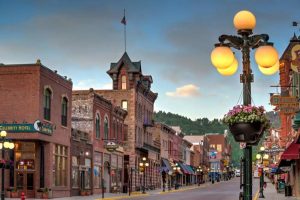 A mostly male population eagerly patronized the many saloons, gambling establishments, dance halls, and brothels. These establishments were considered legitimate businesses and were well known throughout the area.
A mostly male population eagerly patronized the many saloons, gambling establishments, dance halls, and brothels. These establishments were considered legitimate businesses and were well known throughout the area.
In 1890, the railroad connected the town to the outside world. Illegal beginnings aside, Deadwood was a town that was now here to stay. The treaty with the Lakota-Sioux was broken and the Black Hills would never again belong to them. As unfair as it was to break the treaty, I don’t think that it could have lasted forever anyway, because the United Stated was going to be populated from coast to coast one way or the other.
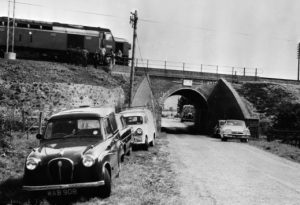
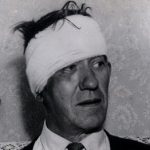 When we think of train robberies, most of us think of the Old West, and bandits on horseback, riding up along side the train, and jumping on. Then, with guns pointed at everyone, they robbed the train, and left the same way they came in. In fact, I think most of us thought that the days of robbing a train were over, and maybe that played to the advantage of the outlaws, because on August 8, 1963, a group of 15 thieves and 2 key informants pulled off one of the most famous heists of all time.
When we think of train robberies, most of us think of the Old West, and bandits on horseback, riding up along side the train, and jumping on. Then, with guns pointed at everyone, they robbed the train, and left the same way they came in. In fact, I think most of us thought that the days of robbing a train were over, and maybe that played to the advantage of the outlaws, because on August 8, 1963, a group of 15 thieves and 2 key informants pulled off one of the most famous heists of all time.
The leader and mastermind behind the heist was Bruce Reynolds, who was a known burglar and armed robber. He was an avid “fan” of the Wild West railroad heists in America, so he decided to see if he could pull something like that off in England. Reynolds and 14 other men wearing ski masks and helmets held up the Royal Mail train heading between Glasgow, Scotland, and London, England. The gang used Land Rover vehicles which had been stolen in central London and marked with identical license plates in order to confuse the police. Unlike the Wild West gangs, this gang used a false red signal to get the train to stop, then hit the driver with an iron bar, seriously injuring him, in order to gain control of the train. The thieves loaded 120 mailbags filled with the equivalent of $7 million in used bank notes into their Land Rovers and sped off to their hideout, which was the Leatherslade Farm in Buckinghamshire, England, to divide their loot. The robbers had cut all the telephone lines in the vicinity, but one of the rail-men left on the train at Sears Crossing caught a passing goods train to Cheddington, where he raised the alarm at around 04:20.
As often happens, the media reports on these things, and before you know it, they are viewed as folk heroes by the public for the audacious nature of their crime and their flight from justice. The first reports of the robbery were broadcast on the VHF police radio within a few minutes and this is where the gang heard the line “A robbery has been committed and you’ll never believe it – they’ve stolen the train!” I’m sure that added to the charm felt by the public, because seriously, who but an eccentric, would steal a train. As always seems to happen, 12 of the 15 robbers were eventually captured. They received a collective 300 years in prison. One of them, a small-time hood named Ronnie Biggs, escaped from prison after just 15 months and underwent plastic surgery to change his appearance. He fled the country and eluded capture for years, finally 
 giving himself up in 2001 when he returned from Brazil voluntarily to serve the 28 years remaining in his sentence…a rather odd thing to do, considering the fact that he had successfully escaped. The two Land Rovers used in the robbery were discovered at the thieves’ hideout. A car enthusiast still owns one of them today, and considers it a collector’s item.
giving himself up in 2001 when he returned from Brazil voluntarily to serve the 28 years remaining in his sentence…a rather odd thing to do, considering the fact that he had successfully escaped. The two Land Rovers used in the robbery were discovered at the thieves’ hideout. A car enthusiast still owns one of them today, and considers it a collector’s item.
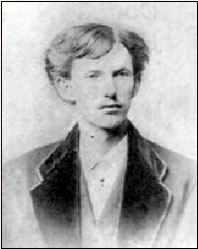 When we think of gunslingers from the old west, a number of names come to mind…among them, Doc Holliday. John Henry “Doc” Holliday was born August 14, 1851 in Griffin, Georgia, to Henry Burroughs Holliday and Alice Jane (McKey) Holliday. When John was just 15 years old, his mother died of Tuberculosis on September 16, 1866. His adopted brother also died of Tuberculosis. In 1870, at the age of 19, Holliday left home for Philadelphia, and on March 1, 1872, he received his Doctor of Dental Surgery degree from the Pennsylvania College of Dental Surgery. Holliday graduated five months before his 21st birthday, so the school held his degree until he turned 21, which was the minimum age required to practice dentistry.
When we think of gunslingers from the old west, a number of names come to mind…among them, Doc Holliday. John Henry “Doc” Holliday was born August 14, 1851 in Griffin, Georgia, to Henry Burroughs Holliday and Alice Jane (McKey) Holliday. When John was just 15 years old, his mother died of Tuberculosis on September 16, 1866. His adopted brother also died of Tuberculosis. In 1870, at the age of 19, Holliday left home for Philadelphia, and on March 1, 1872, he received his Doctor of Dental Surgery degree from the Pennsylvania College of Dental Surgery. Holliday graduated five months before his 21st birthday, so the school held his degree until he turned 21, which was the minimum age required to practice dentistry.
Many people remember Doc Holliday from the gunfight at the OK Corral in Tombstone, Arizona, but prior to that time, he was in Saint Louis, Missouri and Atlanta, Georgia. He started has practice in Saint Louis, but switched to Atlanta less than four months later 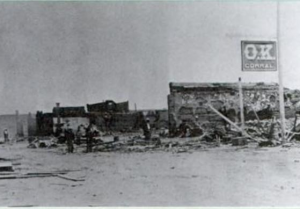 to join a dental practice there. While in Atlanta, Holliday and some friends got into an altercation, and in the end, Holliday went and got a shotgun. He came back and started shooting, either at or over the heads of the other men. Whether or not anyone was killed is up for debate, but Holliday gained a reputation as a gunslinger.
to join a dental practice there. While in Atlanta, Holliday and some friends got into an altercation, and in the end, Holliday went and got a shotgun. He came back and started shooting, either at or over the heads of the other men. Whether or not anyone was killed is up for debate, but Holliday gained a reputation as a gunslinger.
Soon after moving to Atlanta, Holliday developed a bad cough. The doctors told him that he had Tuberculosis. I can’t even begin to imagine how Holliday felt about that diagnosis. He had watched his mother die of that very disease, as well as his adopted brother. Holliday was told he needed to move to a dryer  climate, if he wanted to extend his life. He moved to Dallas, Texas. His dental practice could have suffered because of his ill health, or it could have been caused by the fact that he would rather play poker than work on teeth. Holliday was a decent poker player, so he found that it was a pretty good way to make a living. In 1875, Holliday was arrested in Dallas for participating in a shootout.
climate, if he wanted to extend his life. He moved to Dallas, Texas. His dental practice could have suffered because of his ill health, or it could have been caused by the fact that he would rather play poker than work on teeth. Holliday was a decent poker player, so he found that it was a pretty good way to make a living. In 1875, Holliday was arrested in Dallas for participating in a shootout.
Holliday left Dallas and began drifting between booming Wild West towns like Denver, Cheyenne, Deadwood, and Dodge City. He made his living at card tables, with heavy drinking and late night. All of these things were quite aggravating to his Tuberculosis. By 1887, Holliday’s hard life had caught up with him, forcing him to seek treatment in a sanitarium in Glenwood Springs, Colorado. Finally, on this day, November 8, 1887, Doc Holliday, gunslinger, gambler, and occasional dentist, lost his battle with Tuberculosis, just like his mother and adoptive brother before him.
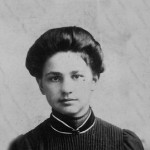 Life in the early 20th century was not always easy. Many people were on the move westward, hoping to find a better life, as things were much more crowded in the east, and land was not readily available. The government was giving away homesteads in Montana, so that is where Bob’s great grandfather decided to move his young family. It took men and women of strong constitution to settle the west, both during the wild west and into the 20th century. Bob’s great grandmother, Julia Doll Schulenberg was one of those strong pioneer women. She was always a hard working woman, and when times got tough, Julia Schulenberg shined. She was a woman capable of doing just about any job required to help her family survive. In addition to running the homestead, farming and caring for livestock and children, she cleaned houses in Forsyth, worked in the cafe, and even served as a midwife to the area women. She did what she had to do to save their homestead during the tough times.
Life in the early 20th century was not always easy. Many people were on the move westward, hoping to find a better life, as things were much more crowded in the east, and land was not readily available. The government was giving away homesteads in Montana, so that is where Bob’s great grandfather decided to move his young family. It took men and women of strong constitution to settle the west, both during the wild west and into the 20th century. Bob’s great grandmother, Julia Doll Schulenberg was one of those strong pioneer women. She was always a hard working woman, and when times got tough, Julia Schulenberg shined. She was a woman capable of doing just about any job required to help her family survive. In addition to running the homestead, farming and caring for livestock and children, she cleaned houses in Forsyth, worked in the cafe, and even served as a midwife to the area women. She did what she had to do to save their homestead during the tough times.
When her oldest child, Andrew…Bob’s future grandfather, accidentally shot himself in the leg at age 15, and subsequently spent 2 years in the hospital, losing his leg about a year into his stay, Julia and her husband Max would pull him through it. They had passed their strength on to their children, showing them how to survive in the rugged west, even during the worst of times. Andrew would be no exception to that rule. With hard work and stubborn determination, Andrew would recover, and while he had a wooden leg, he went on to become the sheriff of Rosebud County, Montana for many years. He would also go on to marry Bob’s grandmother, and later, after their divorce, he would narry again and would be largely out of his son, my father-in-law’s life for all but the last few years before his death in 1986.
While Bob’s dad did not have much association with his dad until much later in life, he has very fond memories of his grandmother…Julia Doll Schulenberg. It would seem that Julia was, in all reality, the backbone of the Schulenberg family. While Max seemed to struggle to get by, and went from job to job, Julia was of very strong stock. She taught her children to work hard, and do what was right, and also passed those good qualities on to her grandchildren. My father-in-law remembers her as a hard working woman, who kept a  clean home and always welcomed him in for a visit. He has based much of his view of a good woman on the amazing example his grandmother gave him.
clean home and always welcomed him in for a visit. He has based much of his view of a good woman on the amazing example his grandmother gave him.
While her husband, Max would die and the young age of 56, Julia Doll Schulenberg lived a long life. She passed away on November 17, 1974, at 89 years of age. Her death came just 4 months before I married Bob, so I never got to meet her. Still, from my father-in-law’s stories of his grandma, I know that she was a woman of strong constitution and a kind, loving spirit, and the fact that I never met her is most definitely my loss.

